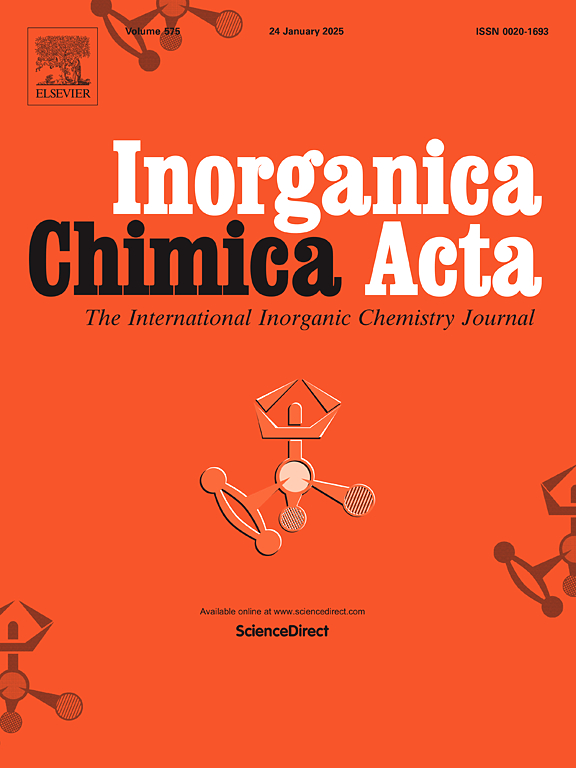A one-dimensional co-based coordination polymer: Synthesis, crystal structure and nonenzymatic electrochemical sensing for glucose
IF 2.7
3区 化学
Q2 CHEMISTRY, INORGANIC & NUCLEAR
引用次数: 0
Abstract
A new one-dimensional Co-based coordination polymer (CP), namely, [Co(Hbta2−)(L)] (Co-CP) (H3bta = 1,3,5-benzenetricarboxylic acid and L = 4̕ -(4-(1H-imidazol-1-yl)phenyl)-2,2′:6–2″-terpyridine) was successfully prepared through the simple one-step solvothermal method. Co(II) is five-coordinated with two carboxylate oxygen atoms from two different Hbta2− ligands and three nitrogen atoms from one L ligand. Hbta2− and L coordinate with cobalt to form a one-dimensional chain by carboxyl groups bridging, and the one-dimensional chains interconnected by strong hydrogen bonding interactions to generate a two-dimensional layer, which is further extended by π-π stacking interactions into a three-dimensional supramolecular architecture. N-rich L ligands enhance the electrochemical properties of coordination polymer. Cyclic voltammetry (CV) and amperometric investigation exhibited that the Co-CP showed excellent nonenzymatic electrochemical sensing performance toward glucose. The Co-CP modified electrode offered a wide linear range from 20 μM to 19.7 mM in three segments and a low detection limit of 5 μM (S/N = 3). The electrochemical glucose sensor also exhibited excellent stability.

求助全文
约1分钟内获得全文
求助全文
来源期刊

Inorganica Chimica Acta
化学-无机化学与核化学
CiteScore
6.00
自引率
3.60%
发文量
440
审稿时长
35 days
期刊介绍:
Inorganica Chimica Acta is an established international forum for all aspects of advanced Inorganic Chemistry. Original papers of high scientific level and interest are published in the form of Articles and Reviews.
Topics covered include:
• chemistry of the main group elements and the d- and f-block metals, including the synthesis, characterization and reactivity of coordination, organometallic, biomimetic, supramolecular coordination compounds, including associated computational studies;
• synthesis, physico-chemical properties, applications of molecule-based nano-scaled clusters and nanomaterials designed using the principles of coordination chemistry, as well as coordination polymers (CPs), metal-organic frameworks (MOFs), metal-organic polyhedra (MPOs);
• reaction mechanisms and physico-chemical investigations computational studies of metalloenzymes and their models;
• applications of inorganic compounds, metallodrugs and molecule-based materials.
Papers composed primarily of structural reports will typically not be considered for publication.
 求助内容:
求助内容: 应助结果提醒方式:
应助结果提醒方式:


